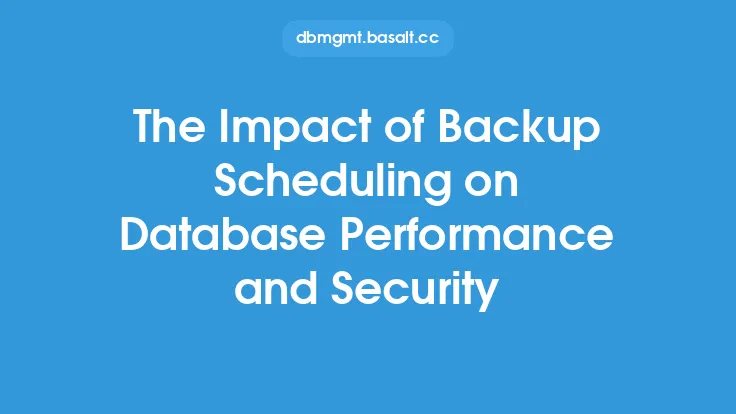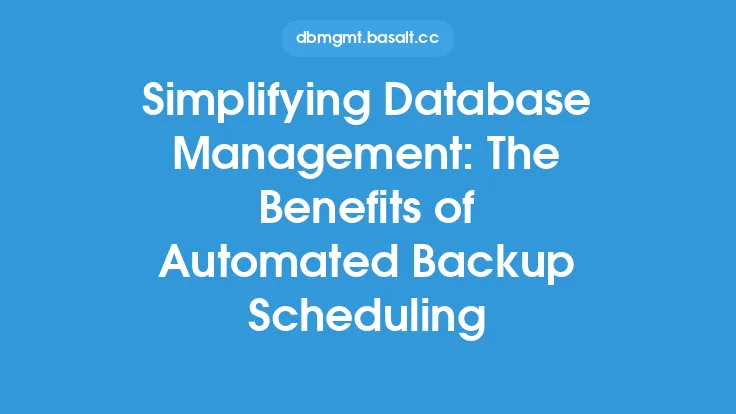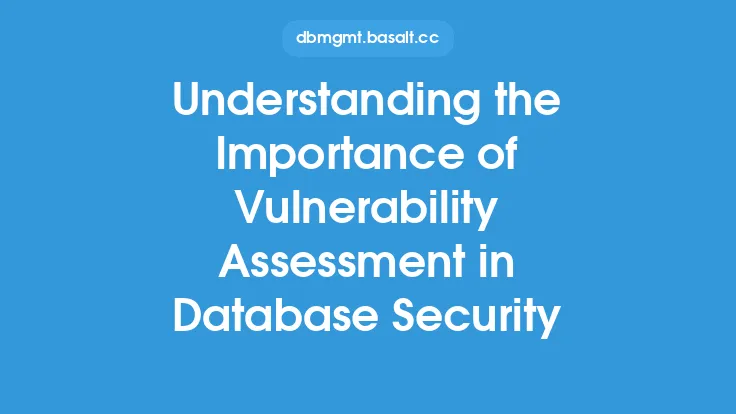In today's data-driven world, databases play a crucial role in storing and managing vast amounts of information. As the volume and complexity of data continue to grow, the importance of protecting it from loss or corruption has become a top priority. One of the most effective ways to ensure data safety is by implementing automated backup scheduling for databases. This process involves creating a schedule to automatically back up database files at regular intervals, providing a secure and reliable way to recover data in case of a disaster or system failure.
What is Automated Backup Scheduling?
Automated backup scheduling is a process that uses specialized software to automatically back up database files at predetermined intervals. This can be done on a daily, weekly, or monthly basis, depending on the needs of the organization and the type of data being stored. The scheduling process can be customized to fit the specific requirements of the database, taking into account factors such as data volume, usage patterns, and recovery time objectives. By automating the backup process, organizations can ensure that their data is consistently protected, reducing the risk of data loss and minimizing downtime in the event of a disaster.
Benefits of Automated Backup Scheduling
The benefits of automated backup scheduling for databases are numerous. One of the most significant advantages is the reduction of administrative burden. By automating the backup process, database administrators can free up time and resources to focus on other critical tasks, such as performance optimization and security management. Automated backup scheduling also ensures consistency and reliability, eliminating the risk of human error and ensuring that backups are performed on schedule. Additionally, automated backup scheduling provides a clear audit trail, making it easier to track and verify the integrity of backups.
Key Considerations for Implementing Automated Backup Scheduling
When implementing automated backup scheduling for databases, there are several key considerations to keep in mind. First and foremost, it is essential to determine the optimal backup frequency and retention period for the organization's specific needs. This will depend on factors such as data volume, usage patterns, and recovery time objectives. It is also crucial to choose a backup software that is compatible with the database management system and meets the organization's specific requirements. Furthermore, it is essential to ensure that the backup process is secure, with adequate encryption and access controls in place to protect sensitive data.
Types of Automated Backup Scheduling
There are several types of automated backup scheduling that can be implemented, depending on the specific needs of the organization. Full backups involve backing up the entire database, while incremental backups involve backing up only the changes made since the last backup. Differential backups involve backing up all the changes made since the last full backup. Each type of backup has its advantages and disadvantages, and the choice of which to use will depend on factors such as data volume, backup window, and recovery time objectives.
Best Practices for Automated Backup Scheduling
To ensure the effectiveness of automated backup scheduling, it is essential to follow best practices. First and foremost, it is crucial to test backups regularly to ensure their integrity and recoverability. It is also essential to monitor backup jobs and receive notifications in case of failures or errors. Additionally, it is recommended to store backups in a secure, offsite location, such as a cloud storage service or a remote data center. This will ensure that backups are protected from physical disasters, such as fires or floods, and can be easily recovered in case of a disaster.
Common Challenges and Limitations
While automated backup scheduling is a powerful tool for protecting database data, there are several common challenges and limitations to be aware of. One of the most significant challenges is ensuring that backups are complete and recoverable. This requires careful planning and testing to ensure that all critical data is included in the backup and can be easily recovered in case of a disaster. Another challenge is managing backup storage, which can become complex and costly as data volumes grow. Additionally, ensuring the security and integrity of backups is a critical challenge, requiring adequate encryption, access controls, and monitoring.
Future of Automated Backup Scheduling
The future of automated backup scheduling for databases is likely to be shaped by emerging trends and technologies, such as cloud computing, artificial intelligence, and machine learning. Cloud-based backup solutions are becoming increasingly popular, offering scalable, on-demand storage and automated backup capabilities. Artificial intelligence and machine learning can also be used to optimize backup scheduling, predicting backup windows and identifying potential issues before they occur. As data volumes continue to grow and databases become increasingly complex, the importance of automated backup scheduling will only continue to grow, driving innovation and investment in this critical area of database management.





